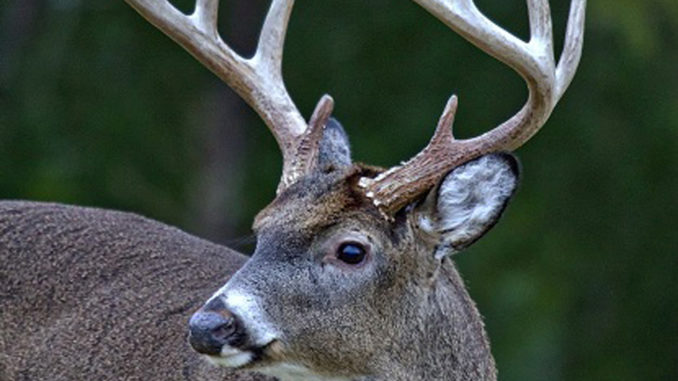
Loss of habitat, influx of coyotes has changed dynamics of herd
Reviews of South Carolina’s 2012 deer season were mixed in terms of the quantity and quality harvested. The total harvest dropped about four percent from 2011 levels, but the number of trophy deer taken was excellent in terms of entries into the state record book.
According to Charles Ruth, the biologist in charge of the deer and wild turkey program for the S.C. Department of Natural Resources, the herd, overall, is in very good condition.
“When viewed as a whole, the balance of the deer herd is very good right now in South Carolina,” Ruth said. “While we did see a decrease in the harvest, it was within the parameters of what we can expect with a stable herd. Also, importantly, we had another very good year with the harvest of trophy animals based on our data from the 2013 scoring sessions across the state.
“Based on all the information we’ve got, the herd health is good, and I think the prospects for the 2013 season are good for both numbers and trophy deer. Weather and other external factors can impact the number of hunter days we have, and that can have a significant impact on harvest numbers. If we have some unusual conditions during the October and November time frame when some of the most productive hunting occurs, that alone can significantly impact the number of deer harvested.
“With a balanced herd for the habitat we currently have, our harvest numbers could be up or down slightly in 2013 without raising any herd-health issues or concerns with the herd health,” Ruth said. “I think we should harvest about the same number of deer, give or take a couple of percentage points.”
“Based on responses from our annual survey of deer hunters, we estimate that a total of 116,673 bucks and 101,181 does were harvested, for a statewide total of 217,854 deer in the 2012 deer hunting season,” Ruth said. “This figure represents a 3.8-percent decrease in harvest from 2011 when 226,458 deer were harvested and is 31.9-percent below the record harvest in 2002 of 319,902 deer.
“After many years of rapidly increasing during the 1970s and 1980s, the deer population in South Carolina exhibited relative stability between 1995 and 2002. Since 2002, however, the population has trended down. It has not gone down every year, but the overall reduction in harvest seen since 2002 can likely be attributable to a number of factors, with habitat change being a major component.”
Ruth said that although timber-management activities stimulated significant growth in South Carolina’s deer population in the 1970s and 1980s, considerable acreage is currently in even-aged pine stands that are greater than 10 years old. Ruth said this creates a situation that does not support deer densities at the same level as younger stands in which food and cover is more available.
“As is always the case, not all counties have equal percentages of deer harvest,” Ruth said. “Some counties and even regions of the state annually produce lots of deer, but some new areas appear every year in terms of producing quality hunting.
“With the 2012 harvest data, comparisons can be made between deer harvests from the various counties in South Carolina if a harvest per unit area is established,” Ruth said. “Harvest per unit area standardizes the harvest among counties regardless of the size of individual counties. One measure of harvest rate we like to use is the number of deer taken per square mile. When considering the estimated deer habitat available in South Carolina, the (statewide) harvest rate in 2012 was 10.4 deer per square mile. Although the deer population in the state has generally declined in recent years, this harvest rate is good in comparison with most other southeastern states.”
Ruth said the top deer-producing counties were led again by Bamberg County with a harvest rate of 19.2 deer per square mile. Ruth said the data showed Bamberg County actually down in overall harvest from 2011 but still productive enough to lead the state. The remainder of the top 10 counties were, in order: Anderson, Union, Greenwood, Abbeville, Spartanburg, Newberry, Allendale, Chester and Orangeburg.
“While some counties had overall harvest decreases, there were a good number of counties that had significant harvest increases” Ruth said.
Ruth said that total deer harvest strictly by county is not comparable among counties because counties vary significantly in size and are not directly comparable, but it is data the SCDNR is frequently asked to provide.
“It has become customary to rank the counties based on number of deer harvested,” he said. “The top 10 counties during 2012 for total harvest were: Orangeburg, Williamsburg, Colleton, Newberry, Fairfield, Chester, Union, Hampton, Spartanburg and Laurens counties.”
Ruth said the 2012 hunting season was very good in terms of quality deer being taken.
“The most recent round of whitetail deer antler measuring conducted by the S.C. Department of Natural Resources in the spring of 2013 revealed 246 new (entries),” Ruth said.
Ruth said that the top producing trophy county was no surprise for the 2013 scoring session.
“For the third year in a row, Aiken County was this years’ top producer of State Record entries with 33,” Ruth said. “Other top counties included Orangeburg County with 18 entries, Anderson and Williamsburg counties with 12 entries and Greenville County with 11 entries. These results come as no surprise as these counties have historically produced good numbers of record entries.”
Ruth said the long-term data he has for all-time record book scores for leaders at the county level shows Orangeburg County remains at the top with 447 sets of antlers on the list. he said the remaining top five counties include Aiken County with 421, Fairfield County with 255, Colleton County with 241 and Anderson County with 238 entries.
Ruth said that statewide population estimates put the deer herd at about 750,000 animals, with an estimated harvest of approximately 225,000 each of the last few years, although that number was down a bit in 2012. Although the total deer harvest in South Carolina has been down the last few years, indications from the antler records program are that deer quality remains good. Ruth said this would make sense because fewer deer in the population would benefit from increased nutrition.
Ruth said that although some of the top counties have relatively high deer populations, some of these counties have more moderate numbers. He said it is important that hunters and land managers understand how the density of deer in an area affects the quality of the animals. Areas with fewer deer typically have better-quality animals because natural food availability and nutritional quality is higher. Good nutrition is important in producing good antlers, but deer reproduction, recruitment and survival are also directly tied to nutrition.
Mike Johnson, general manger of The Clinton House hunting lodge near Clinton echoed a lot of what Ruth said from the perspective of a private hunting operation.
“In 2012, we did not see as many deer as we normally do, so I’d say our overall numbers of deer were down,” Johnson said. “However, we did have a lot of quality bucks taken. In fact, it was a very good year for trophy bucks. Hunters also saw a lot of small bucks, so the future looks bright in that regard, since we do not harvest young bucks.
Johnson also said that despite the law legalizing deer baiting in the Upstate, plans at The Clinton House are to proceed as normal for the 2013 season.
“It’s our goal to have our food plots and do other management work we do annually to keep deer on the property year-round,” said Johnson (864-833-0274). “We have not decided what role baiting may or may not have with our hunting, but our over-riding goal is to provide quality year-round management, nutrition and good habitat for deer. We’re not going to abandon proven techniques and simply start relying on using corn as bait. We’ll just have to get into the hunting season and see how things play out in regards to the baiting situation.”

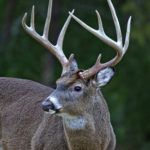
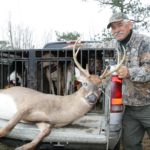
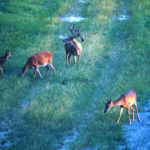
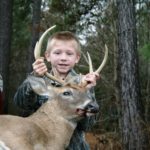



Be the first to comment